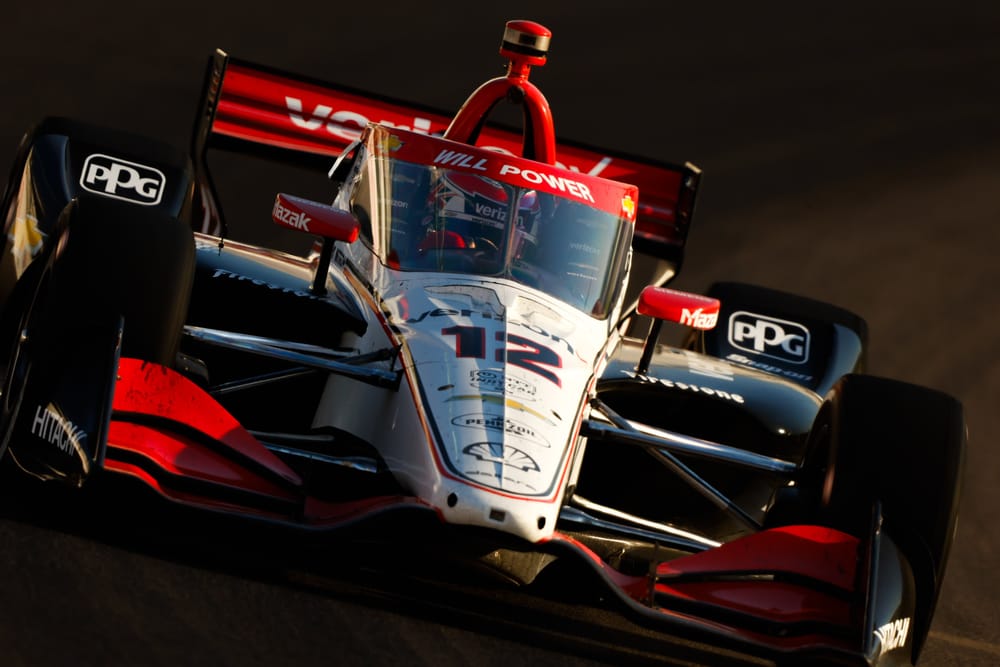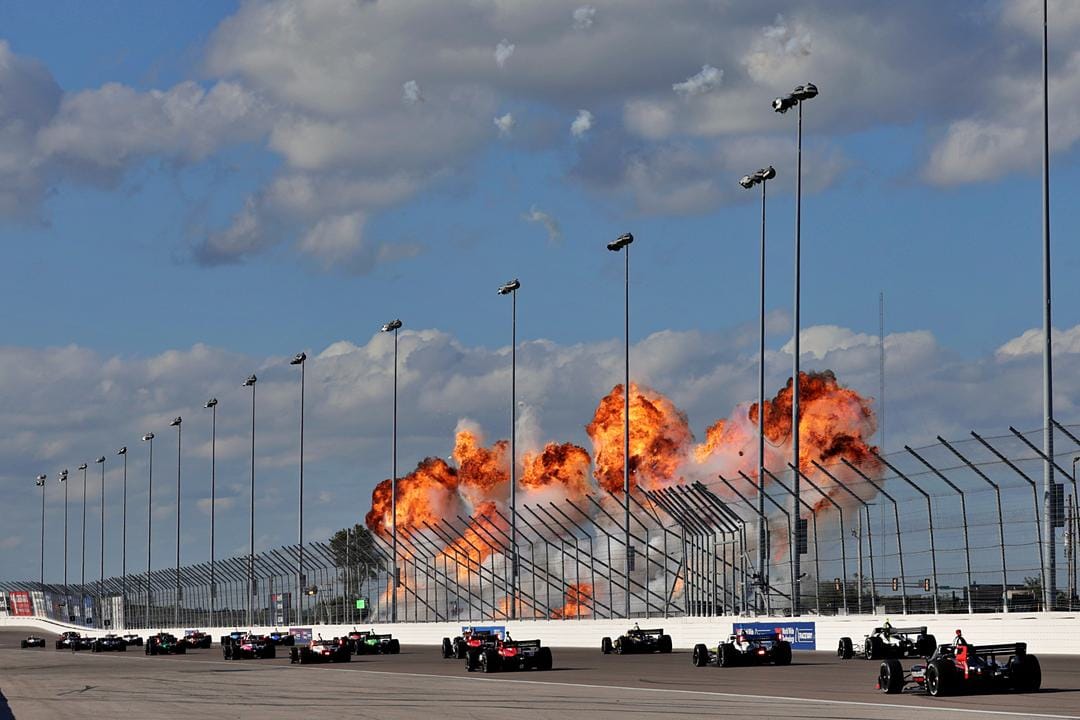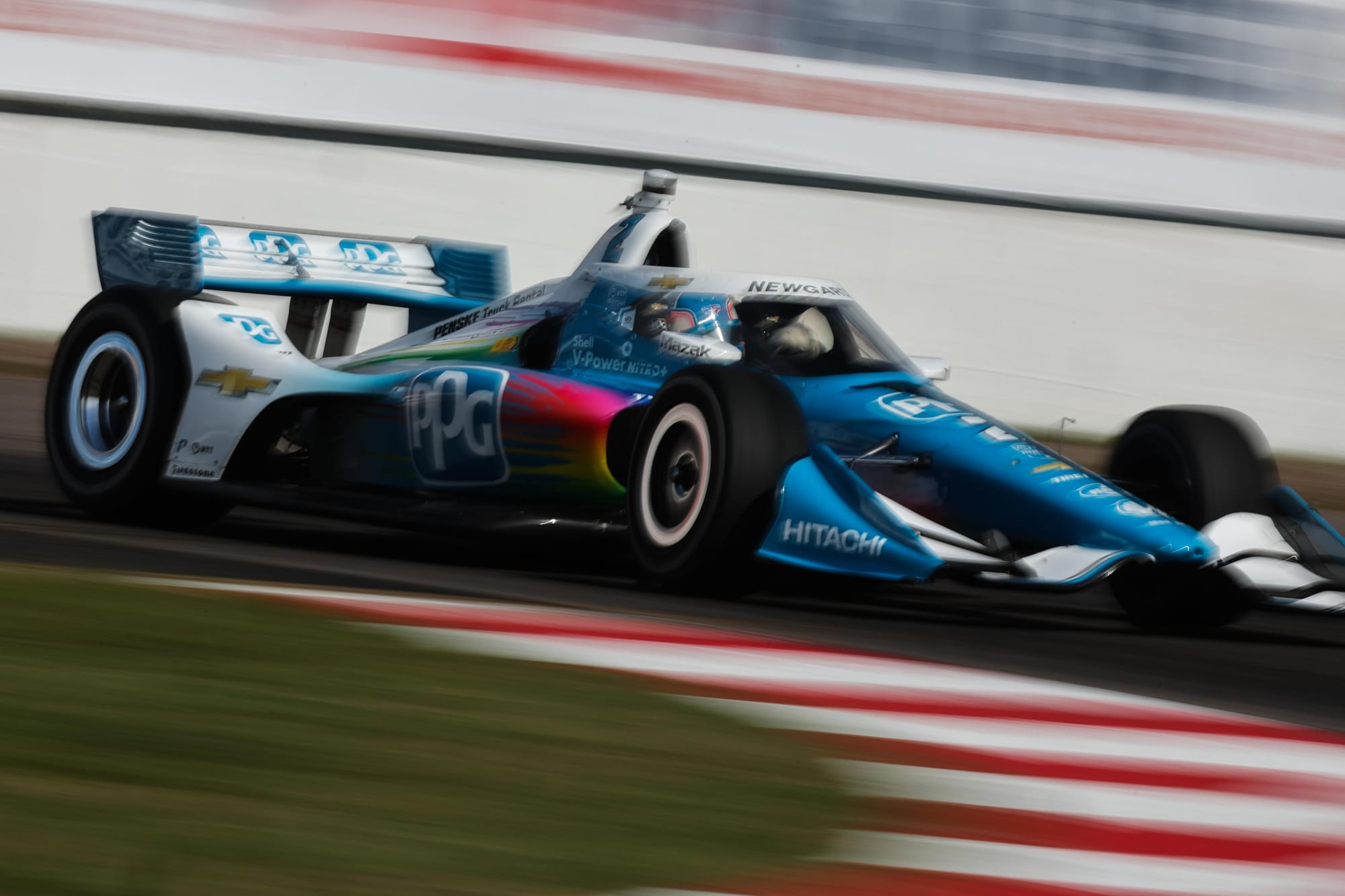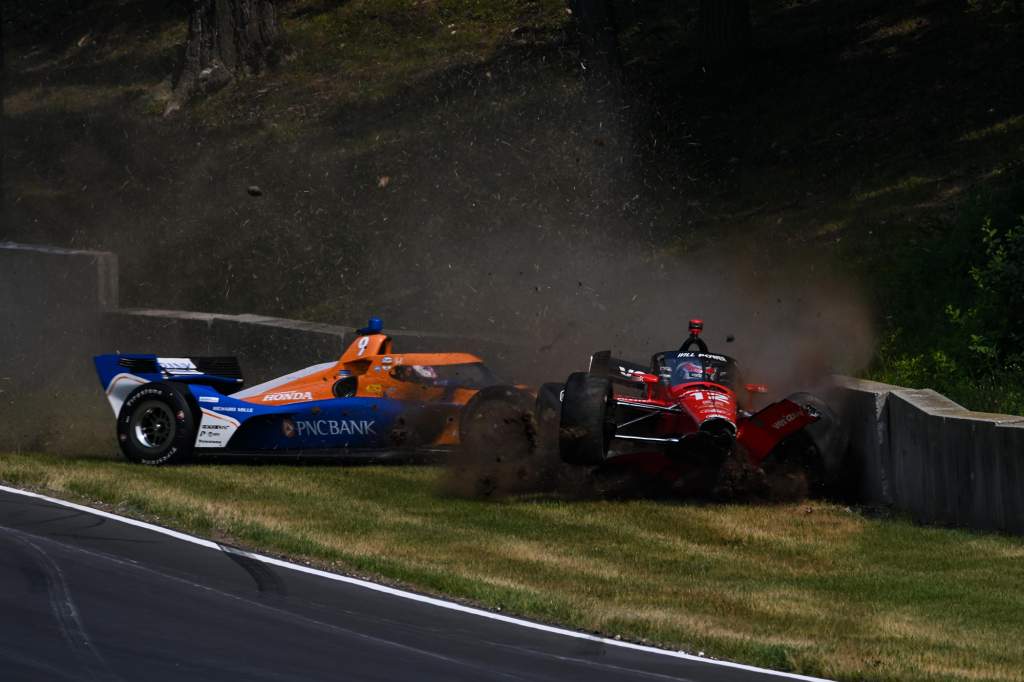Will Power giving his team-mate Josef Newgarden the middle finger, after Power was taken out of a vital race for the championship during a slow restart led by Newgarden, just about summed up Team Penske's controversial IndyCar season.
It's neither the first Penske team-mate clash this year nor the first race where it has been embroiled in controversy.
Frustration boiled over.#INDYCAR pic.twitter.com/bDsvMHQWQa
— NTT INDYCAR SERIES (@IndyCar) August 18, 2024
But even so, it generated a severe reaction, with some on social media even claiming preferential stewarding treatment - which likely stems from Penske's push to pass scandal earlier this season and an issue of interpretation regarding the 'separation of church and state' between Penske the team and Penske the series owner.
To understand what happened, why there was so much animosity and what might happen next between the team-mates, we’ve investigated things further.
Why Power was so mad at Newgarden
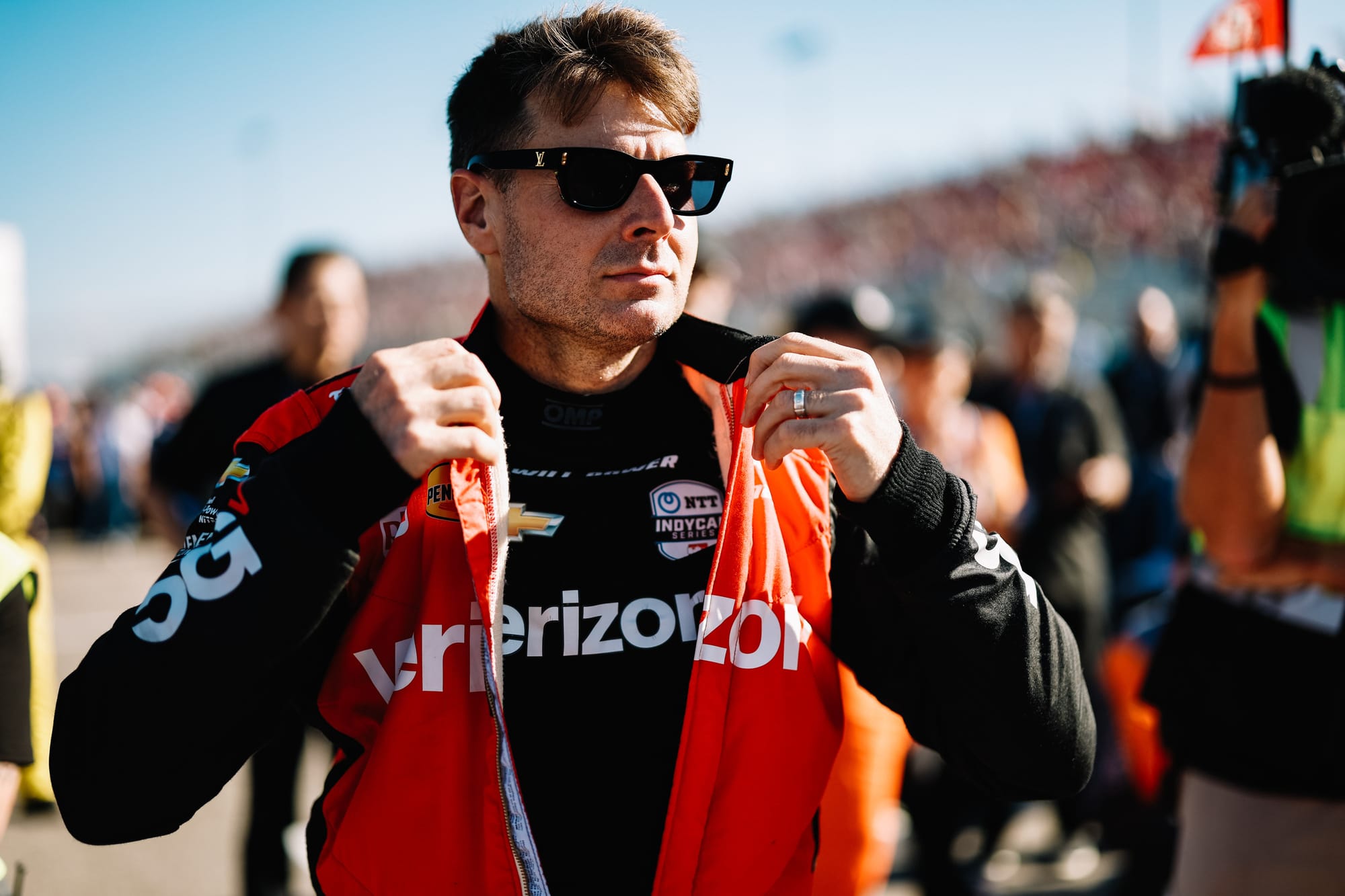
Power was taken out by Alexander Rossi on a late-race restart with nine laps to go, while he was running fourth and on course to take points out of Alex Palou's championship lead.
Having got out of the car, Power then flipped the bird at his team-mate, while Colton Herta - who avoided being caught up in the incident - called what Newgarden did "dirty".
How the chaos unfolded with 8 laps remaining.
— NTT INDYCAR SERIES (@IndyCar) August 18, 2024
📺: #Bommarito500 on USA and Peacock pic.twitter.com/IjwIB6fpjL
Power obviously thought Newgarden's slow run to the green flag was the main cause in the aftermath.
Newgarden ultimately didn't break any rules with his restart but, because it was so slow, those kinds of situations usually produce trouble back in the pack.
Rule 7.7.1.3: At the appropriate time, the pace car lights will be turned off, indicating the intent to restart the race. The leader is required to maintain the pace lap speed until reaching the restart zone designated by IndyCar when the leader shall accelerate smoothly back to racing speed and the green condition will then be declared.
IndyCar confirmed that Newgarden stayed at a steady 80mph before taking the restart. There were multiple things going on: the other Penske of Scott McLaughlin actually hit Newgarden, causing the rear end of Newgarden's car to wiggle, and the green flag actually appeared to fly just as McLaughlin hit Newgarden, rather than when the leader accelerated/was accelerating to racing speed.
Newgarden appeared to hint at this, saying: "I was trying to go at the end of the zone, as late as you possibly could. It looked like there was just a mistime there, so..."
So he wasn't at racing speed, and that is what likely caught out a number of drivers including Rossi, who was the most aggressive of the leaders, while trying to get going on that restart. The green flag was out but clearly the cars ahead weren't up to full speed or even close.
IndyCar assesses restart procedures - especially on ovals - on what feels like a race-by-race basis. It knows how important it is from a safety aspect and just from the perspective of making the series look good. Having a massive crash on a restart always makes a series look a bit amateur, and obviously that's not the case.
It’s hard to police the speed of a restart, and you certainly couldn't have a standing start on an oval. Raising the minimum speed might help, but restarts are so important in IndyCar that there will always be someone risking it trying to get a jump, as Rossi was at Gateway. IndyCar has worked hard to police restarts better as jumping restarts has been all too common and not punished enough in recent years but 2024 has been much better.
THEY WRECK ON THE RESTART!
— NTT INDYCAR SERIES (@IndyCar) August 18, 2024
The red flag is out at @WWTRaceway.
📺: #Bommarito500 on USA and Peacock pic.twitter.com/kychxIEmbE
Rossi's entitled to try to get the best start possible, but he's also responsible for not crashing into the car ahead.
It will be interesting to see if anything further is ascertained in the post-race analysis on this one. Like many incidents of this nature, it was a perfect storm of lots of things happening that created an unusual outcome.
Where's all the hate coming from?
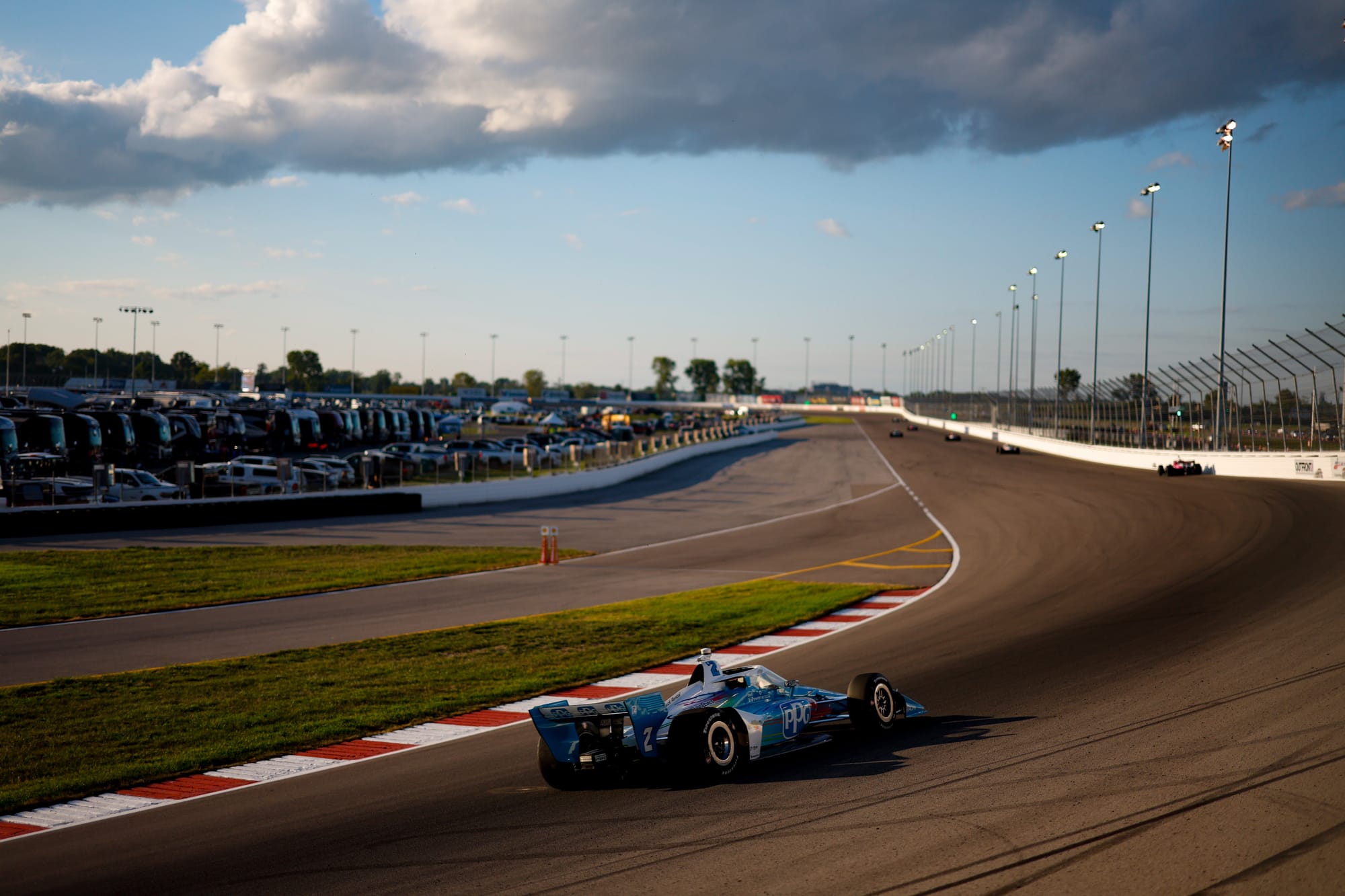
If you're new to IndyCar, then Penske is a lot like a lot of other top-performing sports teams out there.
It is loved by its fans and hated by its rivals. Penske dates back to the 1960s and that's a lot of time to a) achieve success and b) attract haters.
But there's more to it than that...
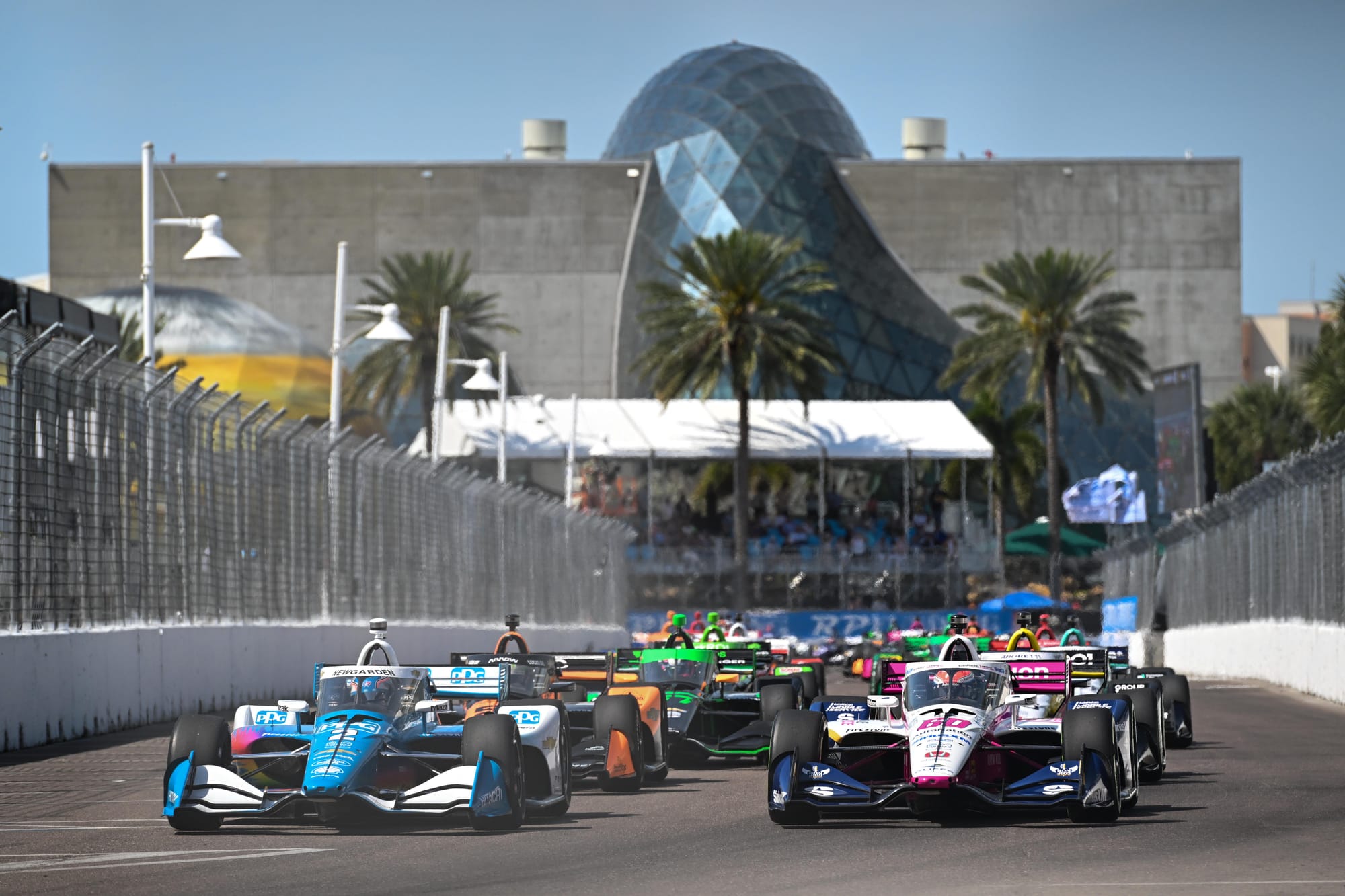
Although the above points are valid, Penske has been under a particular spotlight this year because of its push to pass scandal.
After leaving some software in the car from a hybrid test, which it claimed was by accident, the team was able to use push to pass on restarts in the St Petersburg season opener, which is not allowed.
Power did not use it, but McLaughlin did for around 1.9 seconds and then said he realised it was wrong and stopped, while on-the-road race winner Newgarden used it repeatedly because, he claimed, he thought it had been part of off-season rule changes.
Not only did this all happen, but the team did not self-report this transgression. It was only discovered at Long Beach one month later, when a freak occurrence at race control turned push to pass off; the Penske-run cars were still able to use it at this point, highlighting the anomaly to the authorities.
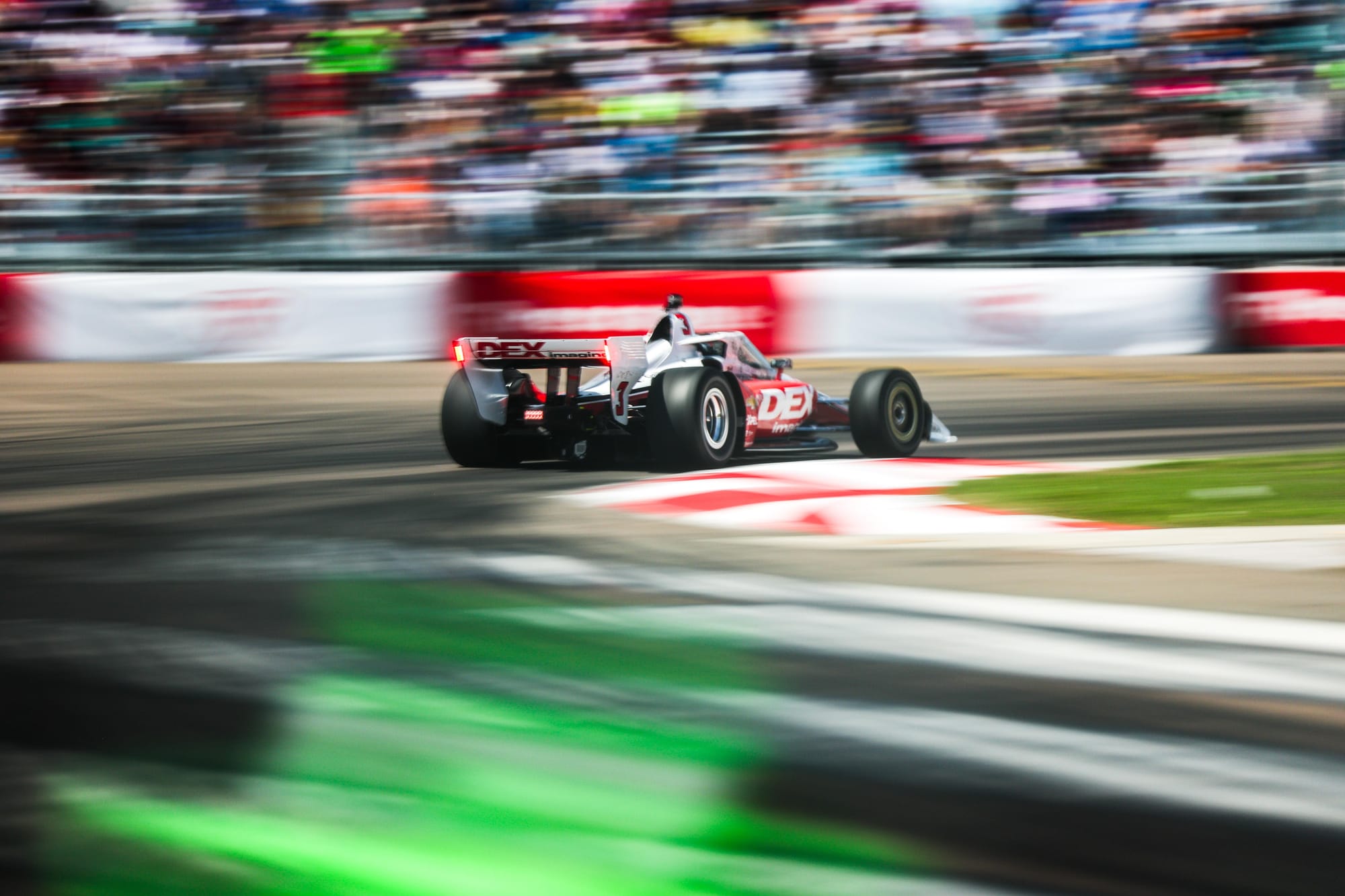
Penske has always claimed to try to do things in the right way and team owner Roger Penske is always quick to come out in such scenarios and blast the notion of cheating. He suspended a number of the team's personnel in the aftermath.
But ultimately, many still believed Penske had done this on purpose to try to gain an advantage.
That's unlikely, because the only way to use push to pass on restarts is by pressing a button on the wheel - in view of the onboard camera used on every Penske car at almost every race of the season.
It would be a rubbish way to try to cheat and it might cost McLaughlin the championship. But people remain convinced this was a bid to cheat or, at the very least, to cover up this one instance of breaking the rules.
Strained Penske is finding a way to cope
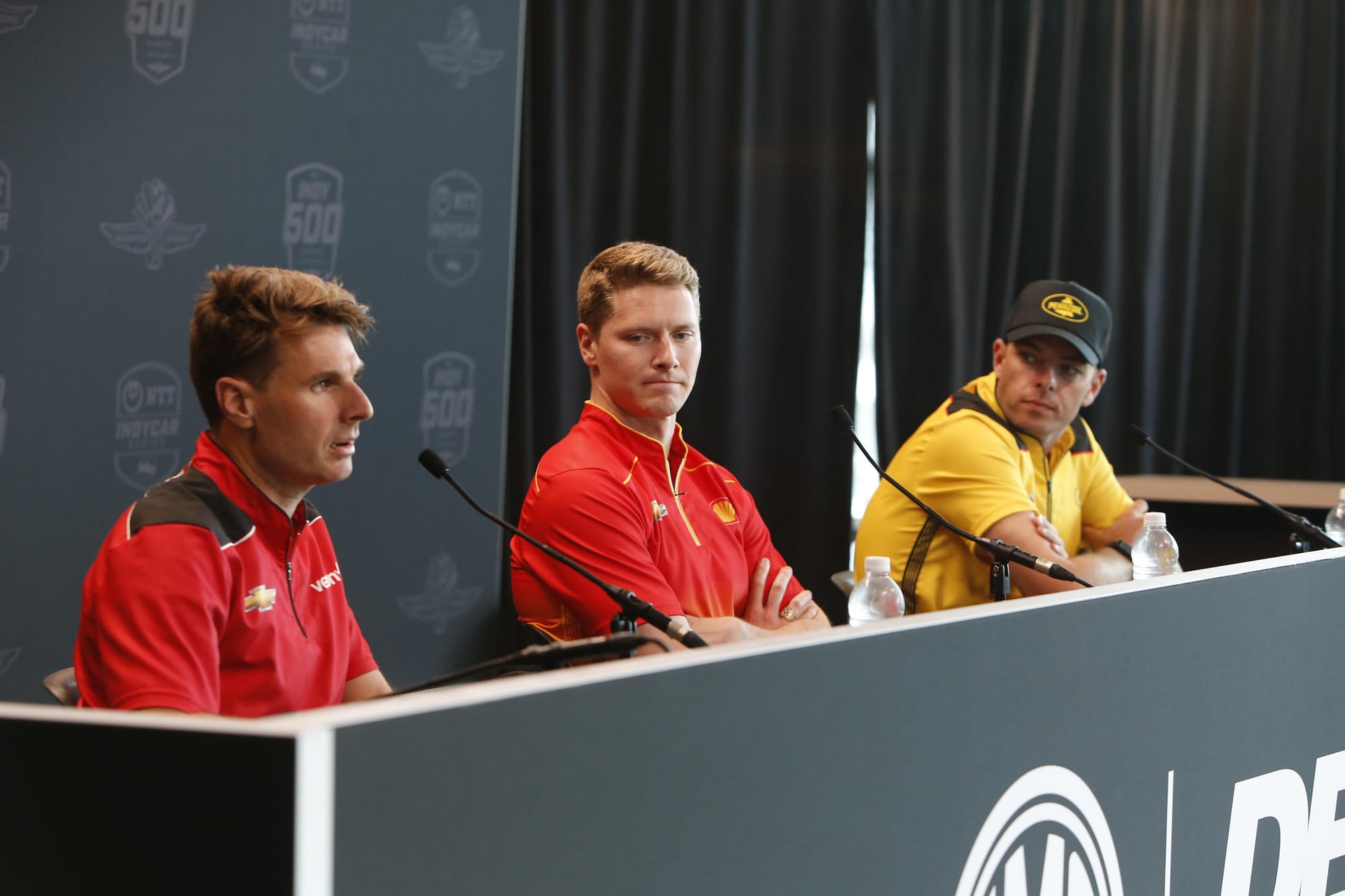
Power might well look up the rules of karma after Gateway, because it was he who dumped McLaughlin out of a fourth place at Toronto last time out with a wild move - coincidentally also with nine laps to go - for which he received a drive-through penalty that dropped him from fifth to 12th.
Without that incident in Toronto and the St Petersburg disqualification, McLaughlin would be only 15 points behind Palou in the championship right now - a number The Race would wager would be reduced before the end of the season.
After the Toronto crash, McLaughlin waited for Power to circle the track and sarcastically applauded him when he arrived at that corner, in much a similar vein to Power gesticulating at Newgarden after the Gateway restart.
Penske's drivers know that eponymous team owner Roger Penske hates team-mates colliding or hindering each other, but that’s now twice in two races it has happened with massive championship implications in both instances.
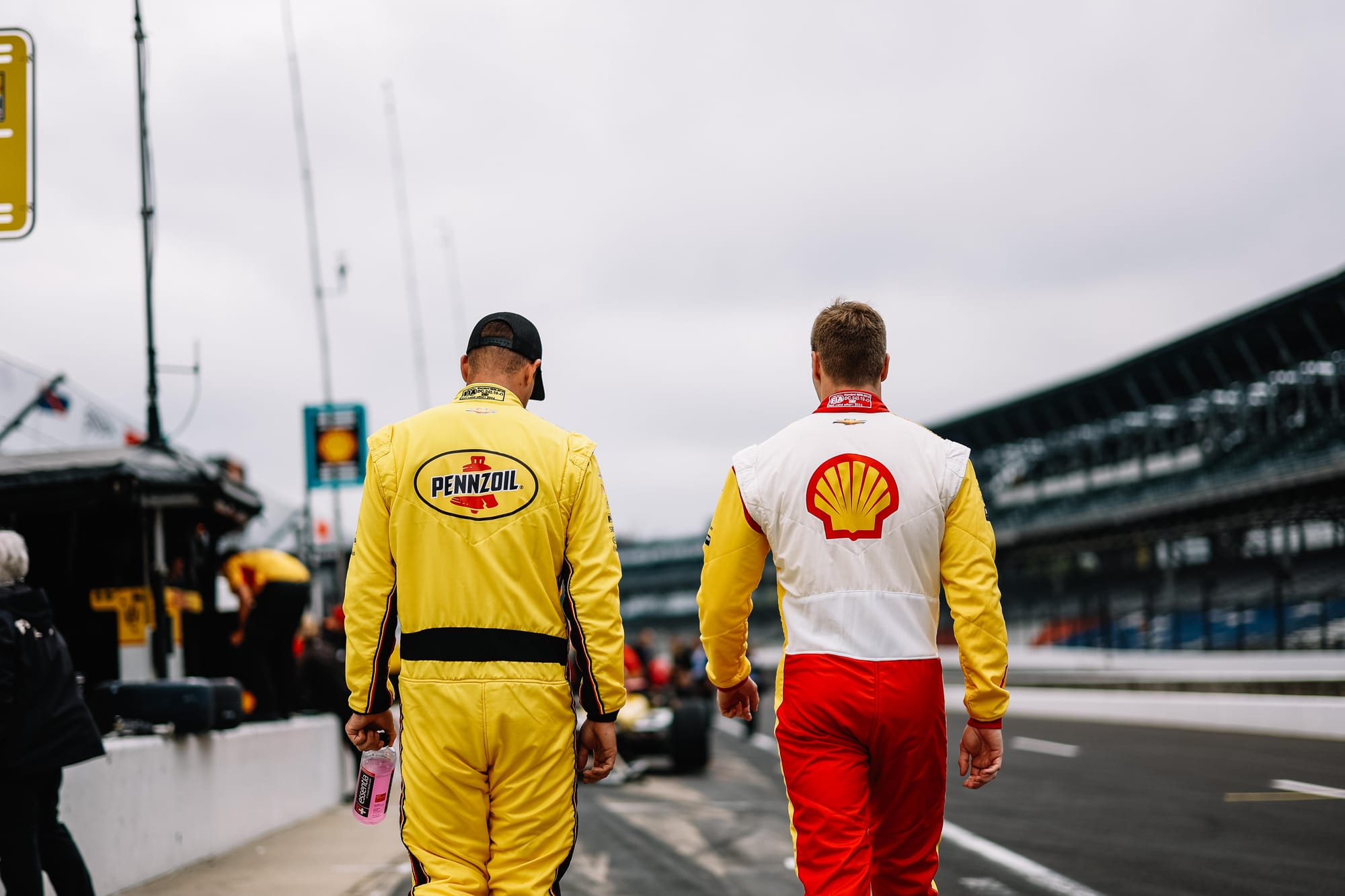
Behind the scenes there's no doubt 2024 has strained the relationship inside the team. Newgarden and McLaughlin are still friendly but not on the level they were in 2023, and Power has now had big, points-affecting incidents with both of them and, unlike in 2023, is back to being his championship-contending self - making him more of an intense rival.
It’s hard for teams with three drivers at this level not to get tangled up every once in a while; it's how they react and respond to that which will be so important for camaraderie.
McLaughlin appeared to forgive Power relatively quickly after Toronto, and Power will no doubt do the same with Newgarden.
There are plenty of instances where Power has combusted. Even last year, he produced a similar gesture at Scott Dixon after the latter caused a practice crash at Road America, while also blasting the circuit staff for how they upkeep the grass run-off. Later on, a sewage truck was parked outside his motorhome (allegedly by track president Michael Kertscher, according to Racer) and, when Power discovered it, he moved it next to Dixon's lot.
The feeling is Power will defuse quickly. Newgarden said he would speak to him "immediately" after his media commitments on Saturday night.
Will Power shared his frustration toward the race leader, his teammate Josef Newgarden. #INDYCAR
— INDYCAR on NBC (@IndyCaronNBC) August 18, 2024
📺 : USA Network and Peacock pic.twitter.com/mhL9PZi6XE
"I think he's going to try to place blame wherever he directly sees it right off the bat. He gets hot quick," said Newgarden. "When you calm down and look at it, it's probably not going to be exactly what he thought it was in the moment."
Power's nature lends itself to big, memorable demonstrations of anger but he usually calms afterwards. The Penske drivers know they'll be fighting close to one another each week and that it does them no good to do anything other than work together for the good of the team to get better.
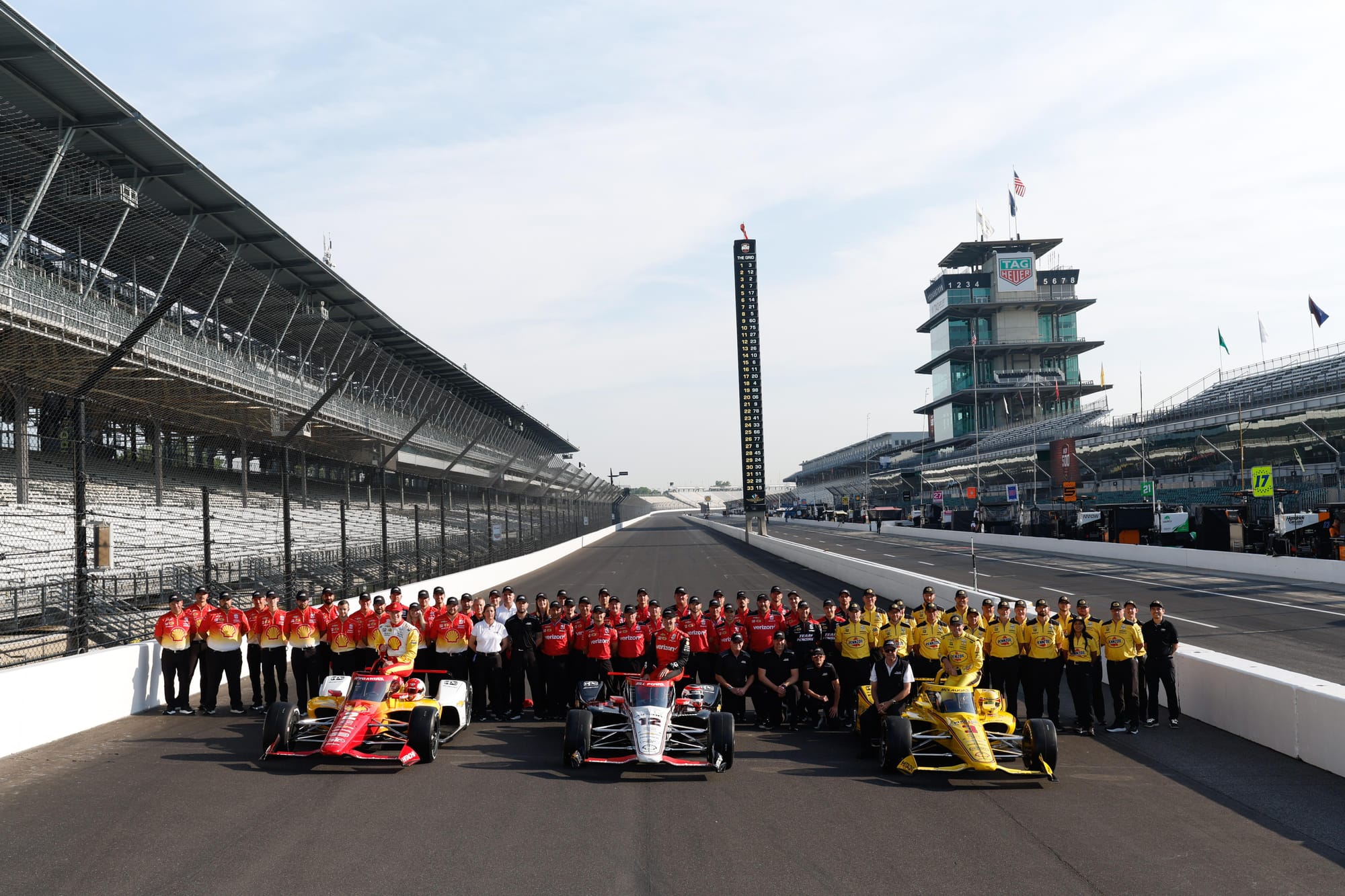
There won't be any problems because of this. And I bet all three are just desperate to get this year finished and reset.
But you get the feeling that the animosity the team has faced has had a galvanising effect in this tough moment that has made it even stronger as a team. The drivers might not be on the best terms they ever have, but they've all had tough moments this year and they have been in it together with the Penske personnel.
The other element in all of this
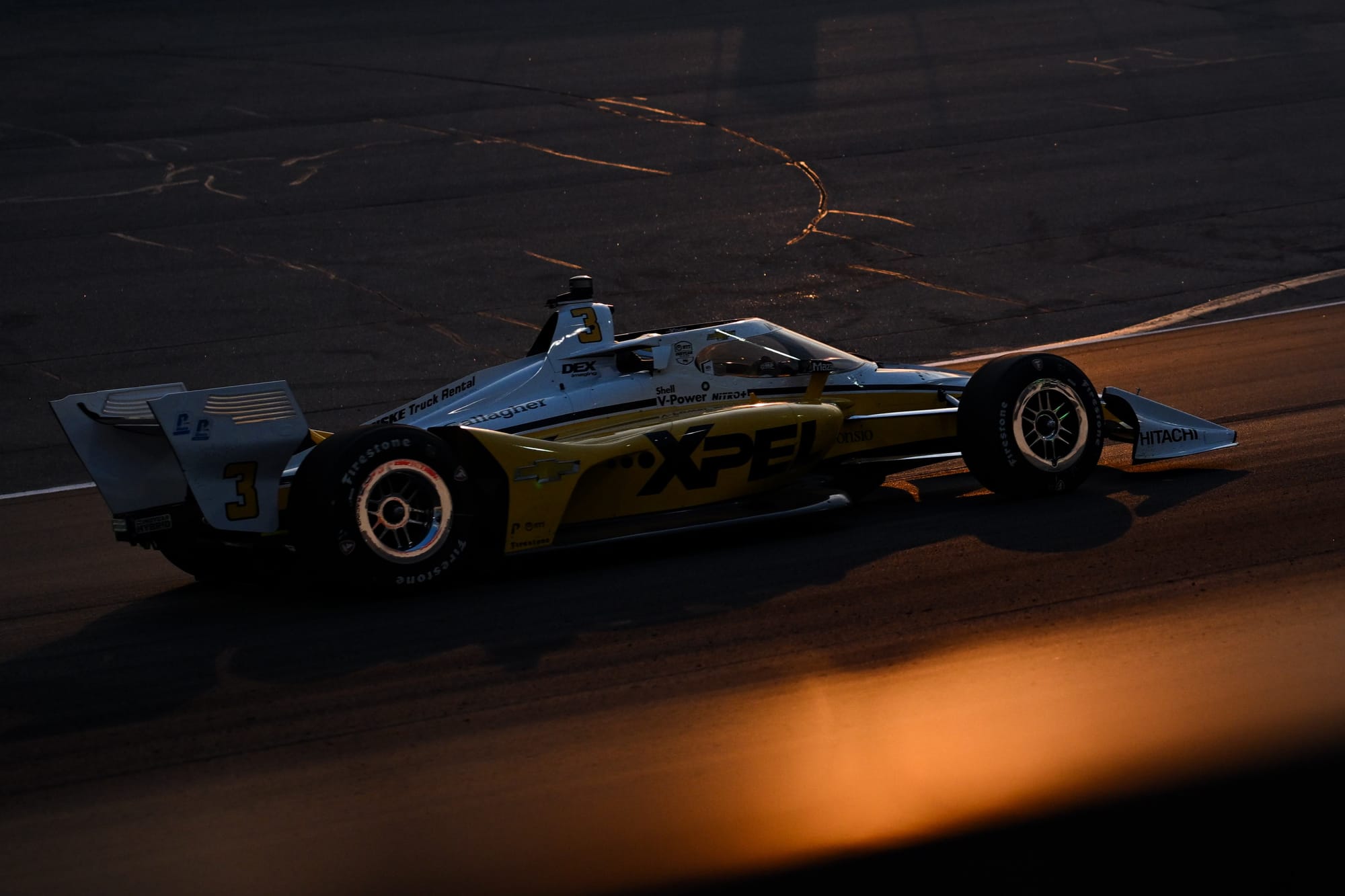
The worst part of the St Petersburg scandal was that it put an extremely problematic area of the championship's ownership model under a magnifying glass.
Roger Penske bought the Indianapolis Motor Speedway and IndyCar in 2020 just before the COVID outbreak, and has invested significant sums not just by saving it in those early months but in improving the series. Losing an event that has over 300,000 spectators through the door every year, the Indianapolis 500, would be enough to destroy most businesses.
Fans and even people in the paddock have wanted more investment in the series and for quicker change, but fundamentally the series is in a much better state than when he took over.
On the flip side, it means the series' most famous team owner has an umbrella company that controls the team and the series.
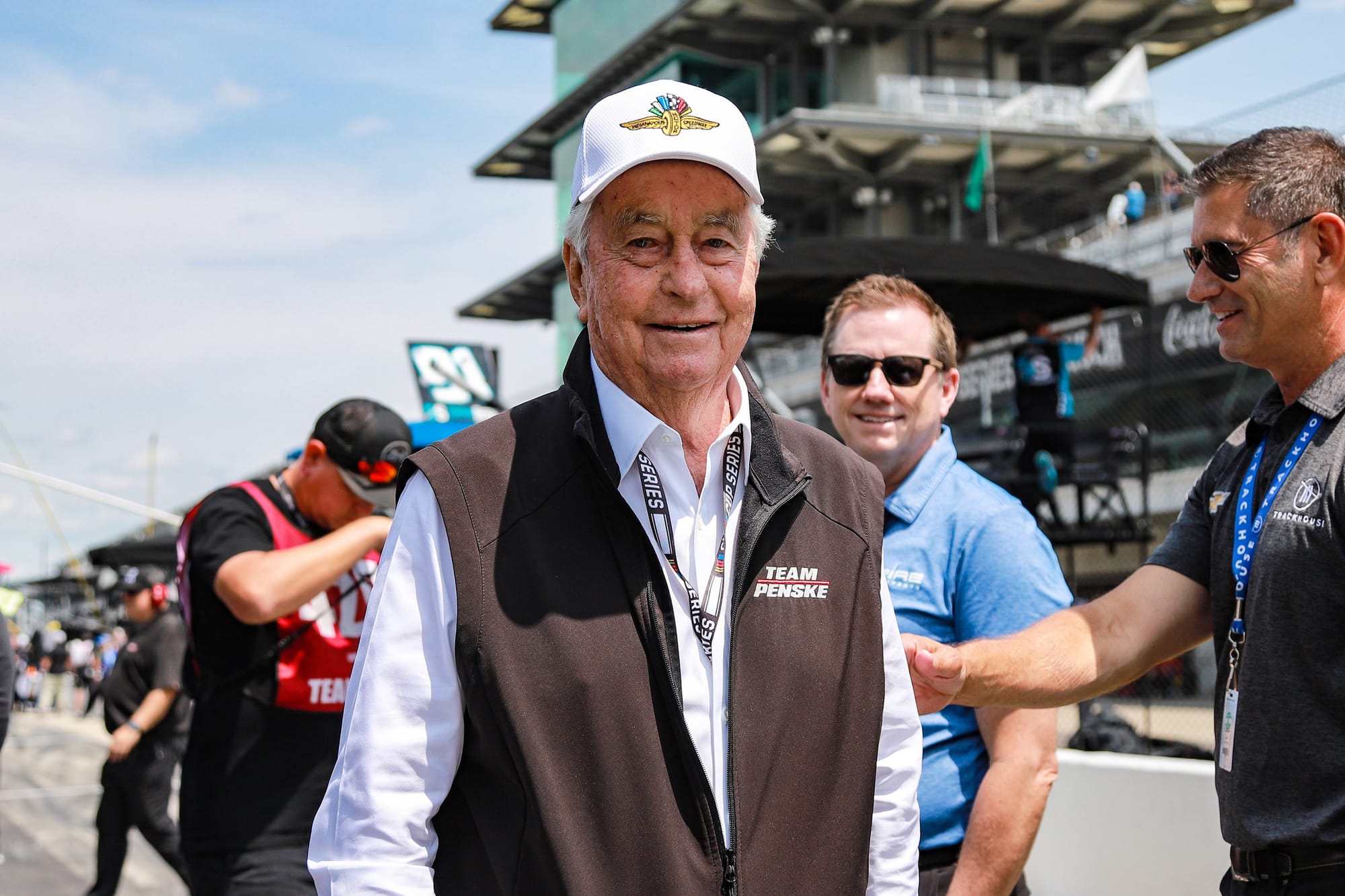
Penske has said he has recused himself from team duties, but the drivers regularly tell stories of how they've discussed elements of the racing programme with him and he obviously still visits races. It would be impossible to separate the two completely.
This lack of separation between church and state was not an issue previously, because the drivers and teams in the championship trusted the integrity of Penske and that the series would be run fairly and independently of his race team.
It's hard to argue against that in terms of results only.
Since 2020 and before this season, Ganassi won three drivers' titles to Penske's one, and they were tied on 24 wins a piece, including an Indy 500 victory each, in that time.
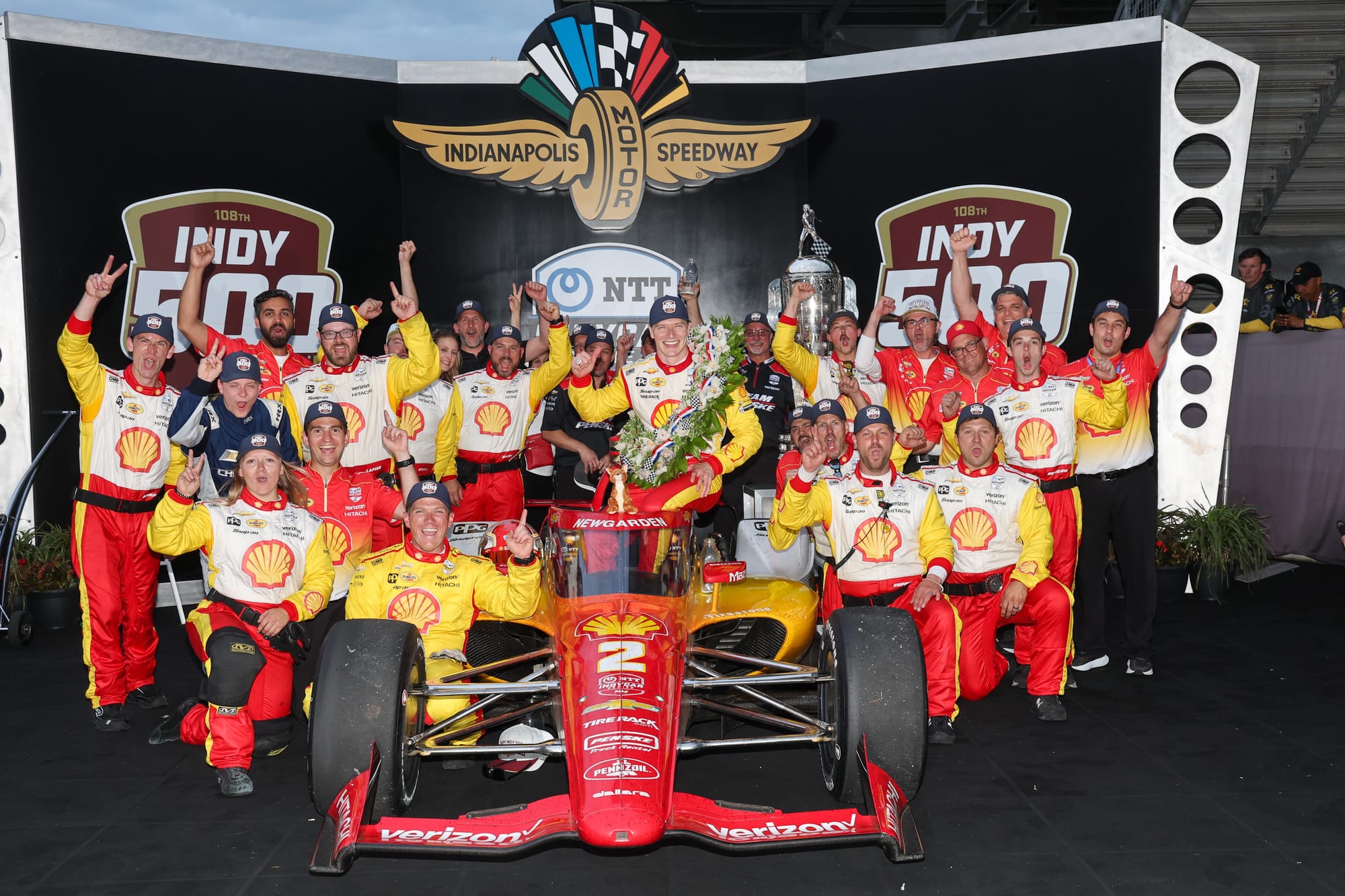
That’s altered slightly this year as Penske added another Indy 500 win and has two more victories so far. But Ganassi still looks set to take another drivers' championship with Palou.
Now, whenever incidents where controversial decisions are made by the stewards involving Penske cars, people are more willing to see an issue there and question it because of the St Petersburg incident. People are no longer happy to err on the side of caution.
I'd argue that regardless of where you stand, race control has pursued a policy of letting a lot of combative incidents go and that's gone for or against all of the teams in recent years. But questions will remain, and people will likely be more willing to look back at previous events with a more pessimistic outlook, too.
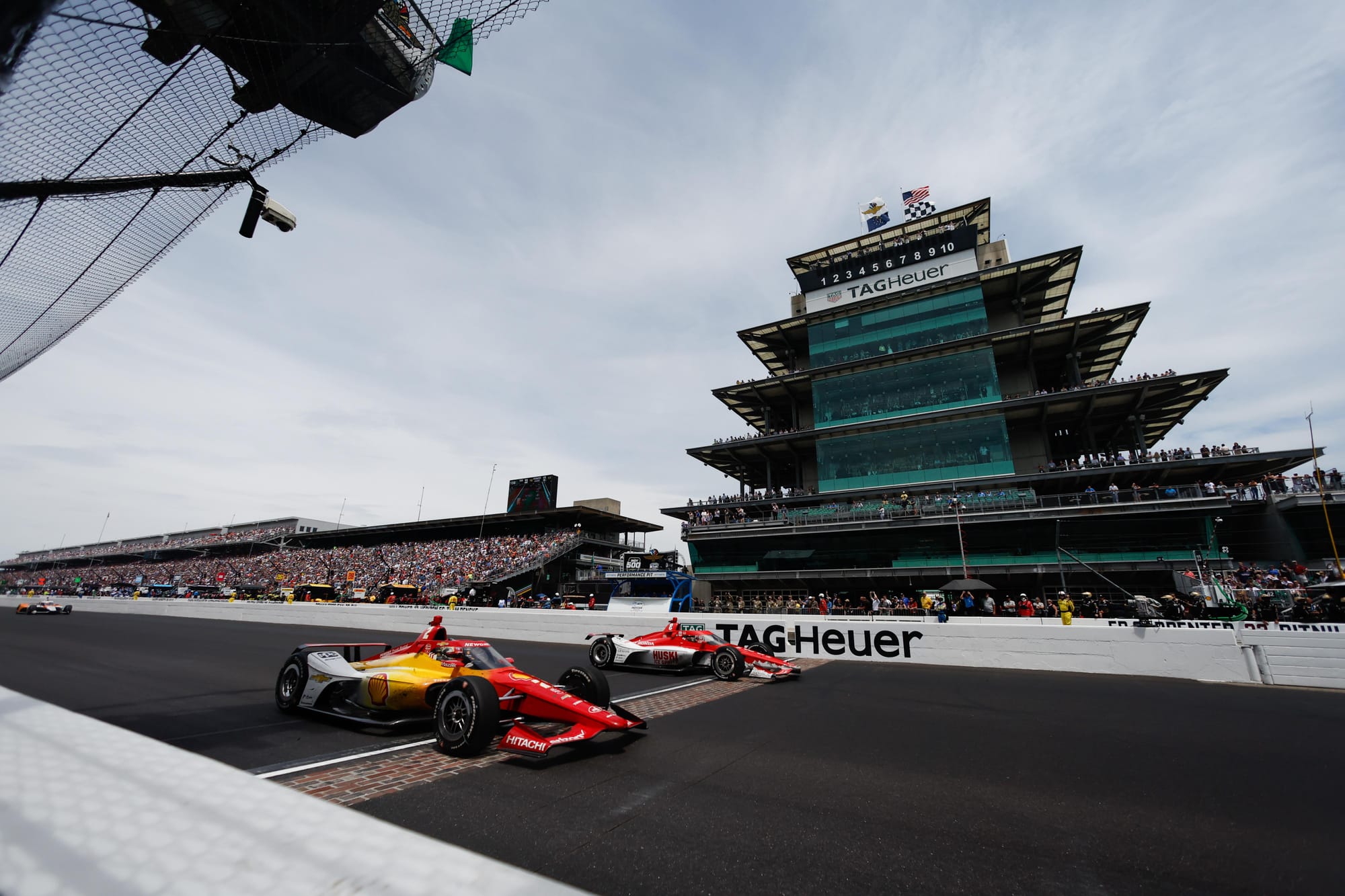
The 2023 Indy 500 will be a big one people look back on, as the series said in the build-up it would try to avoid ending a race under a yellow or red flag, but its decision late on to send the cars out of the pits after a red flag and straight to the restart was a controversial one that cost Ganassi driver Marcus Ericsson the win as Newgarden pounced.
I believe that decision was made with good intentions, but you can see why St Petersburg might have totally changed people's perceptions of how they view the underpinning core issue that Penske owns the championship and a team in it, and has committed a major rules breach as a competitor.
Why Power wasn't penalised for Malukas incident
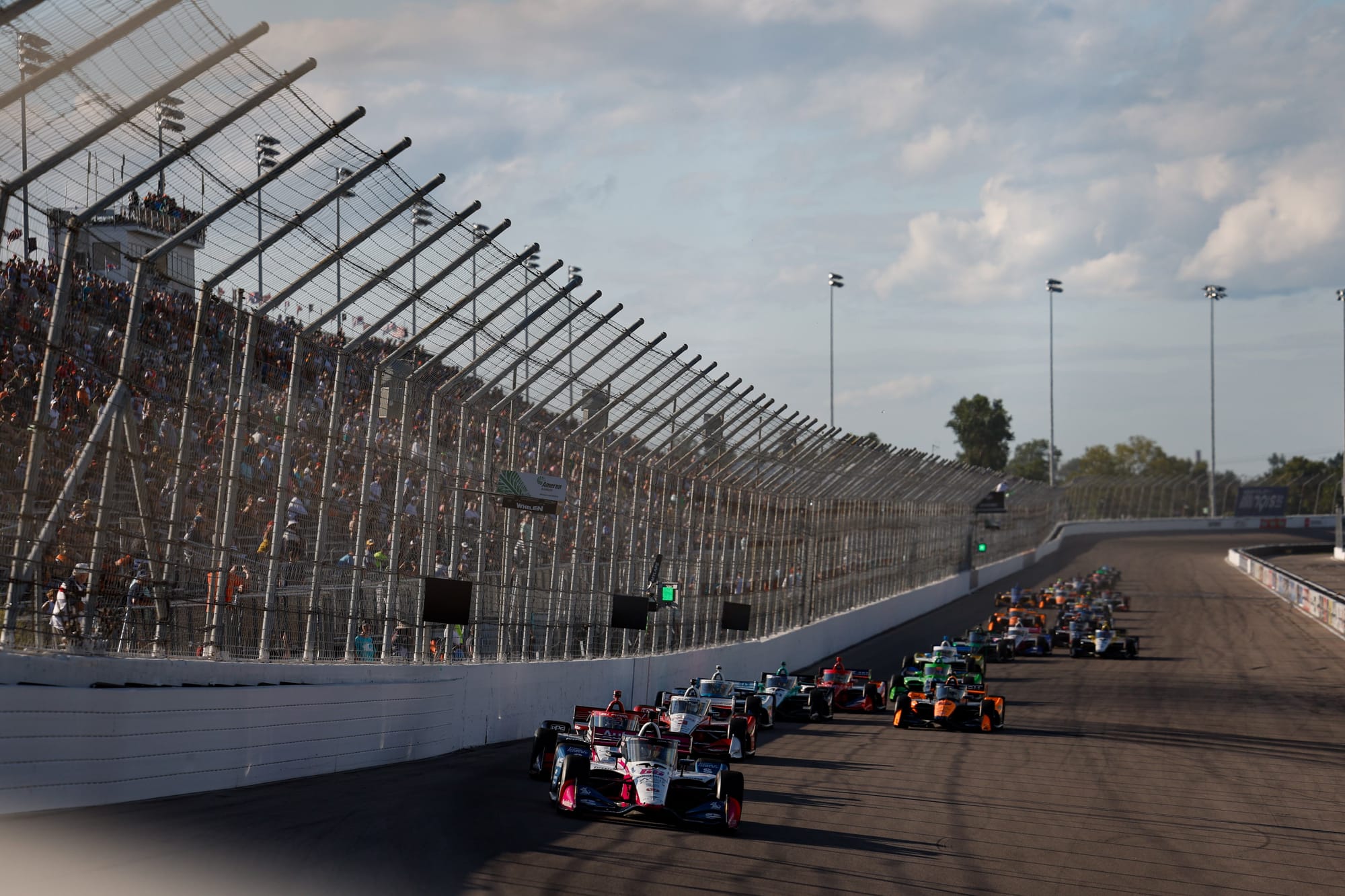
A lot of people were complaining that Power didn't receive a penalty for his role in an incident with David Malukas but Herta did for blocking Linus Lundqvist, a move that didn't result in any contact. But it's a silly comparison.
Herta clearly broke IndyCar's rule on blocking whereby you can't move in reaction to a car behind's bid to overtake. You can anticipate it, but not move to block.
Rule 9.3.2: any driver who moves in reaction, altering their line based on the actions of pursuing competitors, may be penalised.
It's clear as day that Herta did this.
The Power-Malukas incident was much more about judgement and is also subject to a rule that makes it difficult to apportion blame.
Here's IndyCar's avoidable contact penalty rule.
Rule 9.3.3: The primary responsibility for avoiding contact with a competitor resides with the overtaking competitor and the secondary responsibility resides with the competitor(s) being overtaken. A competitor who fails to demonstrate their responsibility and initiates a manoeuvre that results in contact with another competitor may be penalised.
In Power vs Malukas, Malukas was the overtaking competitor and initiated a manoeuvre that resulted in contact with Power.
However, it was clear to see that Power did not leave Malukas enough room and chopped across the front of his car, when there was enough room to allow Malukas to go side-by-side. Although he has secondary responsibility, he still had responsibility.
"I really wanted that result."@malukasdavid has been seen and released following his incident with the No. 12.
— NTT INDYCAR SERIES (@IndyCar) August 18, 2024
📺: #Bommarito500 on USA and Peacock pic.twitter.com/6DtXSOowSp
It's also frustrating because had Power moved up and allowed Malukas to take the lower line, there was lapped traffic in that lane so Power would have maintained the lead and had a car blocking Malukas's path.
The contact came late in the corner, so there's no excuse for Power not to have seen Malukas, either.
Whatever you think of IndyCar's situation and any implied bias towards any team, the Herta penalty was as clear as day, but the Power/Malukas one was much more subjective. I would have penalised Power, but thankfully I’m not a race steward...


